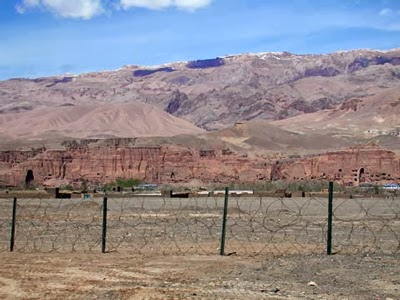I introduce the Deva(Tenbu) following the last time.
The Deva encompasses variety from gentle man to beautiful woman, or wild beast.
前回に続いて天部の仏像を紹介します。
優しいものから、美女や野獣まであります。
Asyra
derives from Devil Asura of ancient India and was born shackled to continued battle and to losing.
However, after it took refuge in the Buddha, it was added to eight-guardian Gods “Tenryu-Hachibusyu” that consist of demon, dragon, and bird.
阿修羅
阿修羅は古代インドの魔神アスラが起源で、戦闘を繰り返し、負け続ける宿命を背負っていました。
しかし仏教に帰依した後、鬼、龍、鳥などの守護神からなる天龍八部衆に加えられた。
< Asyra: Kofuku-ji, Nara, Nara period, the 8th century, lacquer work, H.150cm, national treasure >
This Asyra has not an aspect of the rage of living in the world of conflict, rather has an aspect of innocent boy.
The front face includes a little sorrow in gallant aspect, and the other faces look anxiety and anger slightly.
The sculpture arts not only absorbed the foreign culture but also came to express the delicate mentality.
In this period, Japanese government transformed to a huge capital city, and aimed at the protection of the nation by Buddhism.
Receiving the stimulus of Tang culture, Japanese Buddhist art was florescent with new breath of this period.
この阿修羅像には、闘争の世界に生きる憤怒の形相はなく、あどけない少年の風情がある。
正面の顔は凛々しさの中に憂いを含み、左右の顔にはやや怒りと苦渋の表情が見られる。
渡来文化の受容から、微妙な心理の動きを表現するに至った。
この時代、日本は巨大な平城宮に遷都し、仏教による鎮護国家を目指し、20年後には東大寺大仏建立を行った。
この時代の息吹の中で、遣唐使による唐文化の刺激を受けながら、日本の仏教美術が開花した。
< Asyra: Sanjyusangen-do, Kyoto, Kamakura period, the 13th century, wood >
Is the aspect of this Asyra a threat of the guardian God, or a rage of living in Asyra way (a world of conflict)?
With the same Asyra images, these interpretations very varied.
In fact, it seems that sculptor of it was a group of sculptor specializing in Buddha statues that the eldest son of Unkei led.
この阿修羅の形相は、守護神としての威嚇か、修羅道に生きる憤怒か?
同じ阿修羅像でも、これだけ解釈が異なっている。
実は、これを制作したのは運慶の長男が率いる慶派仏師らしい。
< Karura、a rishi( sennin): Sanjyusangen-do >
These two bodies stand in one line together with the above Asyra in the temple.
The left image derives from Garuda of ancient Indian Gods, and is one of the Tennryu-Hachibusyu.
The right image expresses an old person with thorough realism and the movement.
These 28 statues proclaimed its individuality each other, and will express the Buddhism world as a whole.
These were filled with new realism and strength, and it seemed to announce a beginning of samurai government.
この二体は上記の阿修羅と一緒に堂内に並んでいる。
左像は古代インドの聖鳥ガルーダに由来し、天龍八部衆の一つです。
右像は老境を動きのある徹底したリアリズムで表現しています。
これら二十八体の像は、それぞれに個性を極め、全体として仏教世界を表現しています。
これらには武家統治の始まりを告げる、新しい写実性と力強さがみなぎっています。
< Thousand Armed Kannon(Avalokiteshwara) and the 28 gods in the front row: Sanjyusangen-do >
A thousand statues of gold colored Avalokiteshwara that are side-by-side is overwhelming.
Each statue of this Kannon has overhead 11 heads and 40 hands, and then the faces differ little by little.
金箔が貼られた千体の千手観音が並ぶ姿は圧巻です。
この観音の各像は、頭上に十一の顔、両脇に四十の手を持ち、顔も少しずつ異なります。
Kisshoten
吉祥天
< Kisshoten: Joruri-ji, Kyoto, Kamakura period, the 13thcentury, wood, H.90cm >
Although the distinction of man and woman is not clear for Nyorai and Bosatu(Bodhisattva) of representative Buddha statue, there are many gorgeous women in Deva(Tenbu).
Kisshoten is one of them, originated in Goddess Lakshmi of ancient India, and meant happiness and prosperity.
代表的な仏像である如来や菩薩には男女の区別が明確ではないのですが、天部には幾多の美女がいます。
吉祥天はその一つで、古代インドの女神ラクシュミーに由来し、幸福と繁栄を意味していた。
Taisyakuten
帝釈天
< Taisyakuten: Tou-ji, Kyoto, Heian period, the 9th centry, seating H.1.1m, wood, national treasure >
Taisyakuten originated in Indra of ancient India, and Indra that was battle God was most important God.
In this sense, it would be considered to be most suitable God to protect Buddha.
帝釈天は古代インドのインドラに由来するのですが、戦闘神であるインドラは最重要な神でした。
その意味で、釈迦を守護するには最適な神と見なされたのでしょう。






























